Installing a ductless range hood is a great way to improve the air quality in your kitchen and reduce the amount of noise emitted from your cooking appliances. In this blog post, we will show you how to install an under cabinet ductless range hood. We will also provide you with some tips on choosing the right ductless range hood for your kitchen. So, if you are interested in improving the air quality in your kitchen, read on!
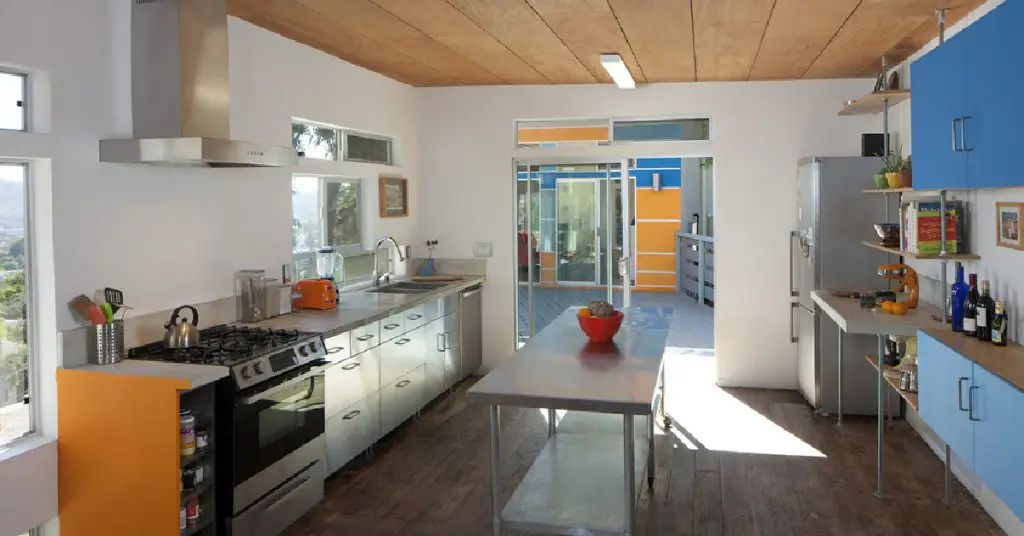
What Is a Ductless Range Hood?
A ductless range hood is a kitchen ventilation device that does not require ductwork. Unlike traditional range hoods, which rely on ductwork to ventilate the kitchen, ductless range hoods use activated charcoal filters to capture and remove cooking odors, smoke, and grease.
In addition, ductless range hoods often come with additional features, such as built-in lighting and variable speed settings. As a result, ductless range hoods offer several advantages over traditional range hoods. In addition to being easier to install, ductless range hoods are also more energy-efficient and can be used in kitchens of all sizes.
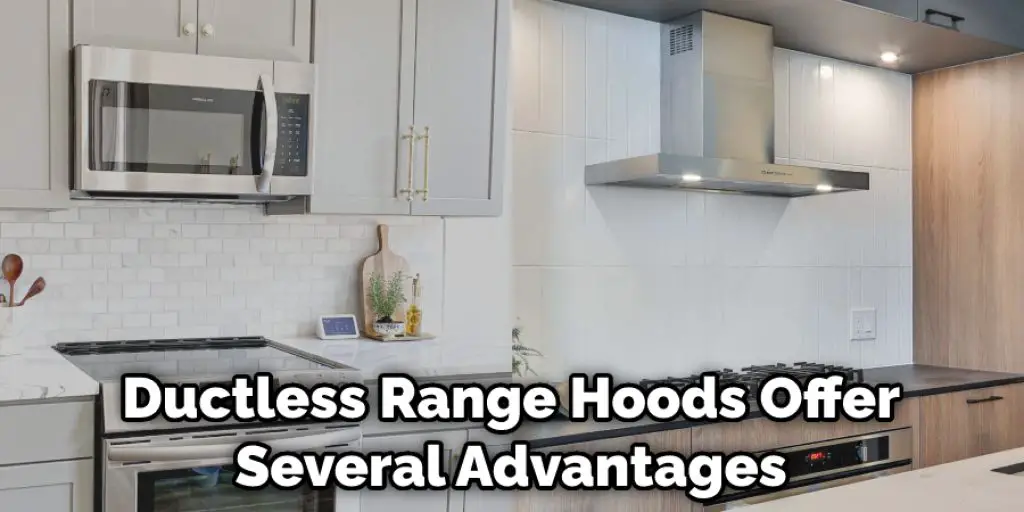
Why Should You Install Under Cabinet Ductless Range Hood?
Most kitchens have a range hood installed above the stove to help ventilate the room and remove smoke, fumes, and odors. However, range hoods can be large and cumbersome, making them difficult to clean and requiring frequent maintenance.
Additionally, they can be loud and produce drafts, making them unpleasant to use. Under cabinet, ductless range hoods offer a sleek and effective alternative. Unlike traditional range hoods, ductless range hoods do not require a dedicated ventilation system.
Instead, they recirculate air back into the room, making them much easier to install and maintain. Additionally, they are significantly quieter than their counterparts, emitting far less draft. As a result, ductless range hoods offer all the benefits of a traditional range hood without drawbacks.
How To Install Under Cabinet Ductless Range Hood Step by Step Guide
Step 1: Prepare the Area
Before you do anything, it is important to make sure that the area where you will be working is clean and free of clutter. This will help prevent any accidents and make the installation process go much smoother.
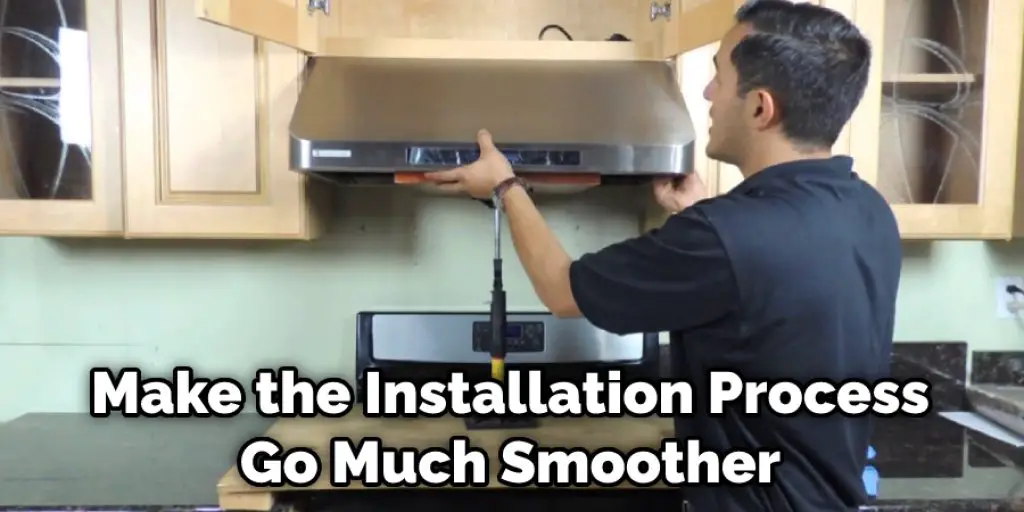
Step 2: Measure the Area
The next step is to measure the area where you’ll be installing your range hood. You’ll need to know the area’s dimensions so that you can purchase a range hood that will fit properly. Once you have the measurements, write them down or take a picture of them so that you can reference them later.
Step 3: Cut the Template
Now you’re ready to cut the template. The template is what you will use to mark the holes that need to be drilled for the range hood’s mounting brackets. In order to make the process easier, it is best to use a power drill with a metal cutting bit.
Step 4: Cut the Hole for the Hood
After you have measured the area and cut the template, you will need to cut the hole for the hood. The best way to do this is with a jigsaw. If you do not have a jigsaw, you can use a drill, and a hole saw.
First, mark the center of the hole on the template. Then, drill a pilot hole in the center of the mark. Next, attach the hole saw to the drill and slowly cut around the perimeter of the pilot hole. Once you have cut all the way around, remove the piece of wood and set it aside.
Step 5: Install the Mounting Brackets
The next step is to install the mounting brackets. The brackets will come with your range hood and should be easy to install. First, find the studs in the wall where you will be mounting the range hood. Once the studs are located, use a drill to screw the brackets into place.
Step 6: Hang the Range Hood
Now it’s time to hang the range hood. Again, you will need a drill, an impact driver, screws, and wire hangers for this task.
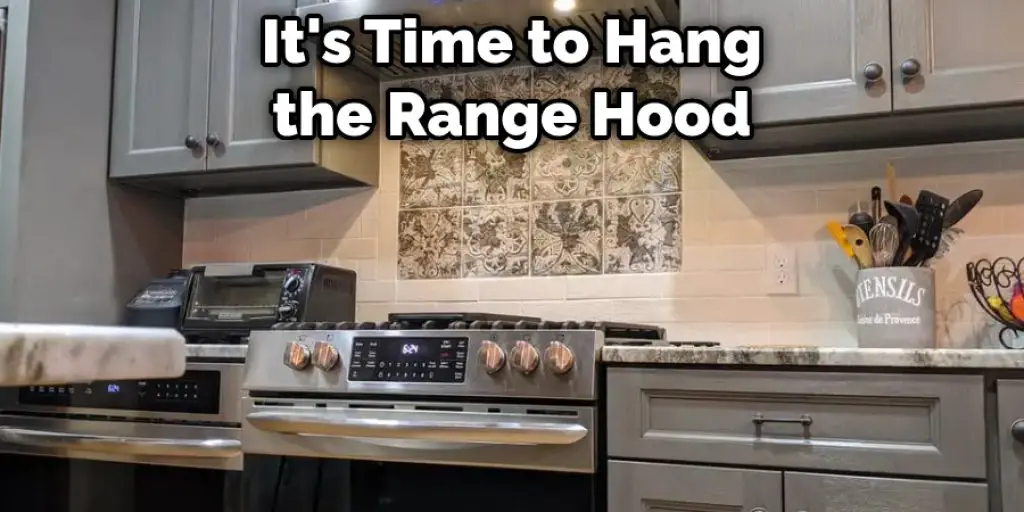
First, use the drill to create pilot holes in the back of the range hood. Then, use the impact driver to screw in the screws. Tighten them until the range hood is secure. Next, use the wire hangers to secure the range hood to the cabinet. Make sure the hangers are wrapped around the screws, so they don’t slip off.
Finally, plug in the range hood and turn it on. Please test it out by turning on the fan and light. Make sure both are working properly.
Step 7: Connect the Ductwork
The final step is to connect the ductwork to the range hood. To do this, you will need a screwdriver and duct tape.
First, remove the cover from the range hood. Then, use the screwdriver to loosen the screws that hold the ductwork in place. Next, disconnect the ductwork from the range hood. Finally, reconnect the ductwork to the range hood and use duct tape to seal gaps.
Now that you know how to install an under cabinet ductless range hood, you can begin by preparing the area and measuring the space. Once you have the correct measurements, use a power drill with a metal cutting bit to cut the template.
After the template is cut, drill pilot holes in the center of each mark and then use a jigsaw to cut around the perimeter. Finally, install the mounting brackets and hang the range hood. Be sure to test it out before putting the ductwork back in place.
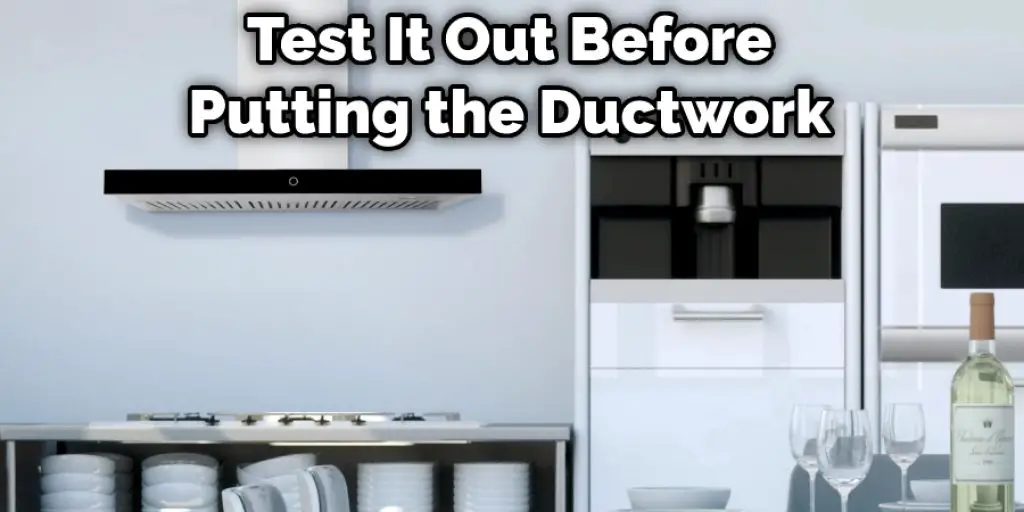
Why Go for Ductless Range Hood Installation?
Ductless range hoods offer many benefits over traditional ducted models. First, they are much easier to install, saving you time and money. Second, they are more energy-efficient, meaning that they will help keep your utility bills low.
Third, they are much quieter than ducted models, so you won’t have to worry about the noise of the fans running in the background. Finally, ductless range hoods offer superior filtration, ensuring that your kitchen is free of smoke and other airborne contaminants.
If you’re looking for a new range hood, consider a ductless model – it could be the best decision you ever make for your kitchen.
Things to Take Care of While Installing an Under Cabinet Ductless Range Hood
Installing an under cabinet ductless range hood is a straightforward process that can be completed in a few hours. However, there are a few things to consider before beginning the installation. First, make sure that the area where the range hood will be installed is free of dust and debris.
Next, measure the space to ensure that the range hood will fit snugly against the cabinets. Finally, mark the location of the mounting holes and drill pilot holes for the screws. With these simple steps, the installation process will be quick and easy. Keep reading for more information about how to install under cabinet ductless range hoods.
Can You Replace a Ducted Range Hood with A Ductless Range Hood?
Can you replace a ducted range hood with a ductless range hood? The simple answer is yes. Many homeowners are choosing to do just that. There are several benefits to choosing a ductless range hood over a ducted one.
First, ductless range hoods are much easier to install. They don’t require any major renovations, and they can be installed in just a few hours. Second, ductless range hoods are much more energy efficient than their ducted counterparts. They use less energy to operate, and they don’t release any heat into the kitchen.
Third, ductless range hoods don’t require any venting. This means that they can be used in any room in the house, regardless of whether there’s an existing venting system. Finally, ductless range hoods are much quieter than their ducted counterparts. This is important for many homeowners who want to keep their kitchen as quiet as possible.
So, if you’re looking for an easy and efficient way to upgrade your kitchen ventilation system, consider replacing your old ducted range hood with a new ductless one.
Frequently Asked Question
Is a Range Hood Liner Necessary?
If you install a ductless range hood, a liner is not necessary. However, installing a range hood with ducting and a liner is necessary to prevent the grease and smoke from reaching the walls and cabinet.
Do Under Cabinet Range Hoods Vent Outside?
Whether or not an under cabinet range hood vents outside depends on the specific model. Some models include an option to vent outside, while others do not. Before purchasing an under cabinet range hood, check whether it is designed to vent outside.
Are Recirculating Extractor Hoods Any Good?
The consensus is that recirculating extractor hoods are not as good as traditional ducted range hoods. However, they are much more affordable and easier to install. So if you are looking for a budget-friendly option, a recirculating extractor hood may be the best choice.
Conclusion
We highly recommend considering a ductless model if you are in the market for a new range hood. This style of hood is more aesthetically pleasing, but it is also easier to install and can save you money on your energy bill. Thanks for reading our post about how to install an under cabinet ductless range hood.
Michael has always been interested in security and safety. When he was younger, he loved reading books about espionage and crime. This led him to develop a fascination with surveillance systems and home security systems.
He has 8 years of expertise installing, fixing camera problems and door locks. He also gained knowledge by helping homeowners to stay safe and secure in their homes.
Over the years, Michael has gained a great deal of experience in this field. He is responsible for the content development on this blog.

